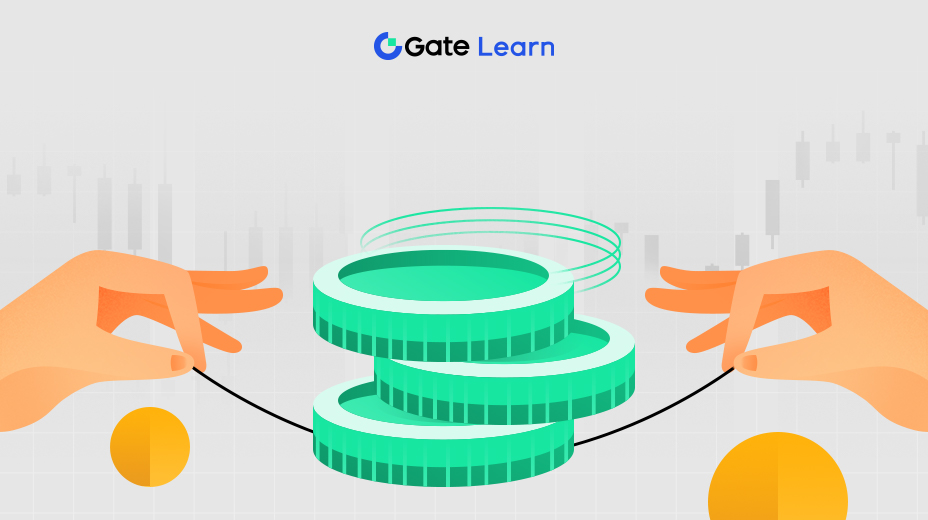Pengantar Solusi Penskalaan Lapisan 2
Jaringan Blockchain, seperti Bitcoin dan Ethereum, menghadapi tantangan skalabilitas karena desain bawaannya. Sementara Bitcoin masih menggunakan algoritma konsensus Proof of Work (PoW), Ethereum telah beralih ke mekanisme konsensus Proof of Stake (PoS) dengan peluncuran Ethereum 2.0.
Baca Lebih Lanjut: Apa Itu Lapisan 2?

Tantangan Skalabilitas di Jaringan Blockchain
Jaringan Blockchain, seperti Bitcoin dan Ethereum, menghadapi tantangan skalabilitas karena desain bawaannya. Sementara Bitcoin masih menggunakan algoritma konsensus Proof of Work (PoW), Ethereum telah beralih ke mekanisme konsensus Proof of Stake (PoS) dengan peluncuran Ethereum 2.0.
Meskipun PoS menawarkan skalabilitas yang lebih baik dibandingkan dengan PoW, Ethereum masih menghadapi keterbatasan dalam hal throughput transaksi. Itu sebabnya pengembang merencanakan pengenalan sharding dalam beberapa bulan mendatang.
PoW hanya dapat memproses sejumlah transaksi per detik, dengan Bitcoin rata-rata 7 TPS dan Ethereum 20 TPS. Sebaliknya, sistem terpusat tradisional, seperti VISA, dapat memproses lebih dari 24.000 TPS. Keterbatasan ini menyebabkan peningkatan biaya transaksi dan waktu penyelesaian yang lebih lama, menciptakan kebutuhan akan solusi penskalaan Layer 2.

“Trilema blockchain” mengacu pada tantangan untuk mencapai desentralisasi, keamanan, dan skalabilitas secara bersamaan dalam jaringan blockchain publik. Meningkatkan skalabilitas seringkali membahayakan desentralisasi atau keamanan.
Solusi lapisan 1, seperti transisi Ethereum dari PoW ke Proof of Stake (PoS) dan sharding, bertujuan untuk mengatasi tantangan ini. Namun, solusi penskalaan Layer 2 diperlukan untuk lebih meningkatkan throughput tanpa mengorbankan karakteristik inti dari blockchain asli.
Ikhtisar Solusi Penskalaan Lapisan 2
Solusi penskalaan lapisan 2 bekerja di atas lapisan dasar (Lapisan 1) jaringan blockchain untuk meningkatkan kapasitasnya, kecepatan transaksi, dan efisiensi keseluruhan. Solusi ini mencakup saluran status, rollup (optimis dan tanpa pengetahuan), dan rantai plasma.
Dengan memindahkan beberapa data dan komputasi secara off-chain, solusi Layer 2 memungkinkan throughput transaksi yang lebih tinggi, pengurangan biaya, dan waktu pemrosesan yang lebih cepat.
Perbedaan dari Lapisan 1
Baca Lebih Lanjut: Apa Itu Lapisan 1

- Lapisan 1 adalah lapisan dasar tempat jaringan blockchain utama beroperasi, sedangkan Lapisan 2 adalah lapisan sekunder yang dibangun di atas Lapisan 1.
- Solusi Layer 1 melibatkan modifikasi pada protokol inti dan mekanisme konsensus, sedangkan solusi Layer 2 berfokus pada pengoptimalan pemrosesan transaksi dan manajemen data.
- Solusi lapisan 2 seringkali memberikan fleksibilitas yang lebih besar untuk peningkatan dan inovasi karena tidak memerlukan perubahan pada protokol blockchain yang mendasarinya.
Keuntungan Solusi Penskalaan Lapisan 2
- Peningkatan throughput transaksi: Solusi lapisan 2 memungkinkan lebih banyak transaksi per detik, membantu mengurangi kemacetan di blockchain utama.
- Biaya transaksi lebih rendah: Transaksi off-chain umumnya memiliki biaya lebih rendah, membuat solusi Layer 2 lebih hemat biaya bagi pengguna.
- Waktu pemrosesan lebih cepat: Solusi lapisan 2 dapat memproses transaksi lebih cepat daripada blockchain utama, meningkatkan pengalaman pengguna.
- Privasi yang ditingkatkan: Beberapa solusi Lapisan 2, seperti saluran status, hanya mengungkapkan status akhir transaksi, menawarkan privasi yang ditingkatkan untuk pengguna.
- Peningkatan dan inovasi yang lebih mudah: Solusi Lapisan 2 dapat diperbarui dan ditingkatkan lebih mudah daripada Lapisan 1, karena tidak memerlukan perubahan pada protokol blockchain utama.
Peran Layer 2 dalam Meningkatkan Performa Blockchain
Arbitrum, dan Optimisme adalah tiga solusi penskalaan Layer 2 terkenal yang didukung oleh jaringan Ethereum. Untuk memproses transaksi lebih cepat daripada jaringan Ethereum primer, solusi ini bergantung pada pengembangan jaringan sekunder, seperti sidechain.
Salah satu solusi Ethereum Layer 2 yang paling populer, beroperasi sebagai sidechain yang terhubung ke jaringan Ethereum, memungkinkan transaksi lebih cepat dengan biaya lebih rendah dan peningkatan kapasitas. Ini juga menyediakan platform sederhana bagi pengembang untuk membuat dApps dan kontrak pintar.
Manfaat Utama Menggunakan Solusi Lapisan 2 di Ekosistem Ethereum
- Peningkatan skalabilitas: Solusi Layer 2 dapat menangani lebih banyak transaksi per detik, memungkinkan jaringan Ethereum untuk mendukung semakin banyak pengguna dan aplikasi.
- Pengurangan biaya gas: Dengan memindahkan beberapa transaksi ke Layer 2, pengguna dapat menghemat biaya gas, membuat Ethereum lebih mudah diakses dan terjangkau.
- Pengalaman pengguna yang ditingkatkan: Solusi lapisan 2 seringkali memberikan konfirmasi transaksi yang lebih cepat, menciptakan pengalaman pengguna yang lebih lancar.
- Ramah pengembang: Platform Layer 2 menawarkan alat dan sumber daya bagi pengembang untuk membangun dan menerapkan dApps dengan lebih mudah, mendorong inovasi dalam ekosistem Ethereum.
- Komposabilitas: Banyak solusi Layer 2 mempertahankan kompabilitas Ethereum, memastikan bahwa aplikasi yang dibangun di atas Layer 2 dapat berinteraksi satu sama lain dan dengan Layer 1.
Membandingkan Solusi Lapisan 1 dan Lapisan 2
Mari kita perkenalkan Across Protocol, solusi jembatan hibrid inovatif, untuk lebih memahami perbedaan antara solusi Lapisan 1 dan Lapisan 2. Across Protocol menghubungkan solusi penskalaan Layer 2 dan Layer 1 Ethereum, memungkinkan token untuk bergerak bebas di antara keduanya. Untuk memberikan pengalaman yang mulus kepada pengguna, solusi hybrid ini menggabungkan fitur terbaik dari solusi Layer 1 dan Layer 2.
Fitur utama dari Across Protocol meliputi:
- Lively Oracle: Memungkinkan transaksi lebih cepat dan lebih terjangkau.
- Bonded Relayer: Memastikan keamanan dan keandalan transaksi.
- UMAS: Suatu jenis kontrak keuangan yang memfasilitasi transaksi keuangan berbasis blockchain yang kompleks.
Dengan diperkenalkannya Across Protocol, kita sekarang dapat membandingkan solusi Layer 1 dan Layer 2 secara lebih efektif.
- Modifikasi lapisan dasar: Solusi Lapisan 1 melibatkan perubahan pada protokol blockchain itu sendiri, sedangkan solusi Lapisan 2 dibangun di atas protokol yang ada.
- Kompleksitas implementasi: Peningkatan lapisan 1 sering kali memerlukan upaya pengembangan dan konsensus yang signifikan di antara peserta jaringan, sedangkan solusi Lapisan 2 dapat dikembangkan dan digunakan secara lebih mandiri.
- Fokus skalabilitas: Solusi Lapisan 1 terutama berfokus pada peningkatan keamanan dan desentralisasi, sedangkan solusi Lapisan 2 menargetkan peningkatan throughput transaksi dan pengurangan latensi.
- Komposabilitas: Solusi lapisan 2 sering mempertahankan kemampuan menyusun lapisan dasar, memastikan bahwa aplikasi yang dibangun di atas Lapisan 2 dapat berinteraksi satu sama lain dan dengan Lapisan 1.
- Fleksibilitas peningkatan: Solusi Lapisan 2 menawarkan fleksibilitas yang lebih besar untuk peningkatan dan modifikasi, karena tidak memerlukan perubahan pada protokol blockchain yang mendasarinya.






